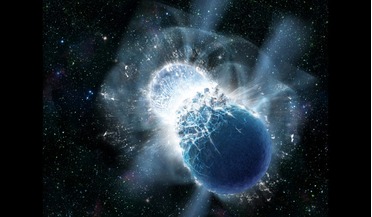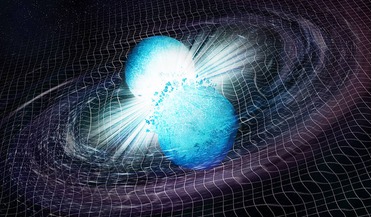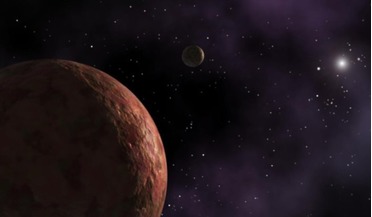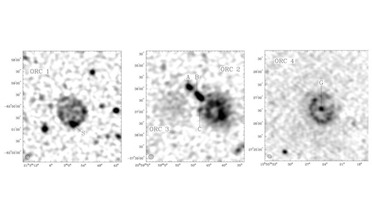 09 May 2016
Ancient silicate grains reveal histories of stardust in the Galaxy
09 May 2016
Ancient silicate grains reveal histories of stardust in the Galaxy
...three major dust producers in the Galaxy: red giant stars, explosive supernovae, and novae,” said the leading author, Dr. Ann Nguyen, Jacobs ...with the mineral enstatite were also analysed (one from a supernova and the other from a red giant star) and ...
 16 October 2017
First detected neutron star merger reveals more than gravitational waves
16 October 2017
First detected neutron star merger reveals more than gravitational waves
.... Again, the previous culprit to explain the formation of atoms with a proton count greater than 26 fell to that of a supernova, as the energy and amount of neutrons released as the core collapses drives the necessary fusion reactions to create...
 04 June 2018
More surprises for neutron star merger GW170817
04 June 2018
More surprises for neutron star merger GW170817
... forward either. For this latter scenario to occur it would mean that two neutron stars from two supernova explosions found themselves sufficiently close together before spiralling inwards and merging. “At the beginning of my career, astronomers...
 13 March 2020
Over 100 new minor planets found in new astronomical survey
13 March 2020
Over 100 new minor planets found in new astronomical survey
... the 7 billion dots down to 22 million “transient” objects by removing any that were present on multiple nights, such as supernovas, stars, and galaxies. To anticipate where those objects might appear next in the night sky, Bernardinelli traced...
 10 July 2020
An unexpected class of 'odd' circular objects found by astronomers
10 July 2020
An unexpected class of 'odd' circular objects found by astronomers
...features crop up a lot in astronomical images; planetary nebula, supernova remnants, a protoplanetary disc or a star-forming galaxy seen ... as possible contenders. These include, artefacts, supernova remnants, galactic planetary nebula and lobes from ...
 February 2016
Defending Earth against cosmic hazards
February 2016
Defending Earth against cosmic hazards
... just by solar radiation but by cosmic radiation originating from the nuclear reactions in stars, from novae and supernovae and even pulsars. Recent experience and scientific studies suggest there are dangers from cosmic radiation...